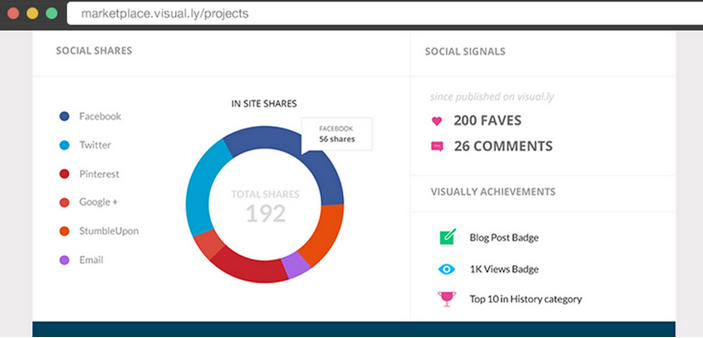Promote, Partner Or Pay: Maximizing Your Content Distribution
If a tree falls in the forest… For decades, marketers have relied on their ability to tell a good story — and relied on mass media to do the rest. Twenty years ago, putting an ad on heavy national TV rotation would ensure it would be seen by 80% – 90% of your target audience. Today, media — and […]

If a tree falls in the forest…
For decades, marketers have relied on their ability to tell a good story — and relied on mass media to do the rest. Twenty years ago, putting an ad on heavy national TV rotation would ensure it would be seen by 80% – 90% of your target audience.
Today, media — and consumer attention — are more fragmented than ever. The average user has access to 168 television channels, visits dozens of websites monthly, remains on a web page for less than 10 seconds, and switches screens 27X an hour.
For marketers across the board, this reality presents unique challenges that are addressed through the rise of programmatic buying, cross-channel retargeting, and relentless media optimization.
For content marketers, however, audience fragmentation introduces an entire new discipline to their practice: distribution.
Enter The Queen
They say content is king and distribution is queen — an adage that’s never been truer than now. The rapid adoption of social media has only amplified the importance of a strong distribution strategy to support any content marketing campaign.
Marketers all too often assume that a great piece of visual content will be seen (or even “go viral”) solely on the strength of that content. While it’s certainly true that some early breakout YouTube hits (remember the JK Wedding Entrance Dance?) were uploaded by normal citizens without giving the faintest thought to distribution, even those “hits” became national news only after they received distribution support in the form of press pickups and earned media coverage.
If You Build It, They Won’t Come
Marketers can no longer create good content and simply post it to their sites or blogs. Smart distribution begins during the content creation phase, with SEO-friendly headlines, relevant meta-tags and page descriptions, and file names that include keywords (vs. DC10001.jpg). Building your content with an eye toward distribution helps set your campaign up for success.
Visual content itself – including infographics, photos, and videos – can aid in promoting distribution and help drive traffic to your site. At Mint.com, the marketing team routinely saw that blog posts including visual content drove 2X as much traffic as posts with text alone. Similarly, tweets with images drive 2x greater engagement and 93% of the most engaging Facebook posts include images.

Courtesy of Launch Inforgraphic
Once your content is published, you’ll have to tell the world. Posting it to Twitter, Facebook, and LinkedIn are obvious places to start, but too many marketers forget to look beyond the Big Three. Other smaller, more targeted platforms may drive greater success. Depending on your content, this could mean pinning your photo to Pinterest or posting your infographic to a forum on Edmunds.

Courtesy of Visually used with permission.
SlideShare, for example, is much more than a repository — the site boasts more than 60M monthly visitors, all seeking out content and insights. In one recent campaign, we helped a leading technology brand execute, and the vast majority of its traffic came from LinkedIn; only a fraction came from the likes of Facebook.
But merely posting isn’t enough; what you post matters, too. A title and link is barely sufficient in this zero attention span age. Pithy and provocative quotes or questions are better, but distribution works best when it takes the medium into account from the outset.
At Visually, for example, we promote long-form content by creating short-form “micro-content” that’s tailored to each social channel in which it runs, turning visual highlights from a video into Vine-ready clips or Instagram-ready images.
Don’t Spray And Pray
The strategies above rely on your brand’s channels to distribute your message: your Twitter feed, your Facebook page, your blog.
Leading marketers are also partnering with publishers and vendors to amplify their distribution efforts. Whether it’s developing content in conjunction with in-house “studios” that have built-in audiences (The Huffington Post, BuzzFeed), developing relationships with influencer bloggers in your space in the hopes that they’ll embed or feature your content, or availing yourself of free promotional platforms like Visually’s Community or SlideShare, successful content marketing depends on tapping into multiple audiences relevant to your brand.

Courtesy of Slideshare.net (fair use).
Beyond partnership, there is, of course, paid distribution. Outbrain, StumbleUpon, Facebook, Twitter, and LinkedIn are just a handful of the social distribution platforms that offer marketers the opportunity to pay to amplify the reach and impact of their content.
Before promoting your content via paid channels, however, it’s critical to understand which pieces of content perform well on which channels. New analytics platforms are helping marketers understand where their content finds success – on their site as well as across the web – so they can allocate paid resources efficiently.
And as paid platforms themselves grow more sophisticated, marketers, too, will be able to optimize their spend not just to grow shares and traffic, but also to drive on-site actions, conversions, and purchases – which is what all marketers care about in the end.
Contributing authors are invited to create content for MarTech and are chosen for their expertise and contribution to the search community. Our contributors work under the oversight of the editorial staff and contributions are checked for quality and relevance to our readers. MarTech is owned by Semrush. Contributor was not asked to make any direct or indirect mentions of Semrush. The opinions they express are their own.
Related stories
